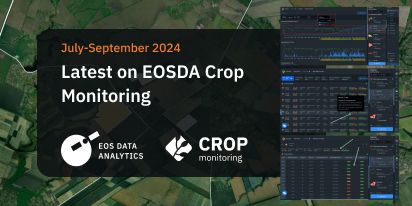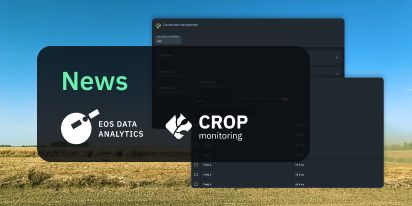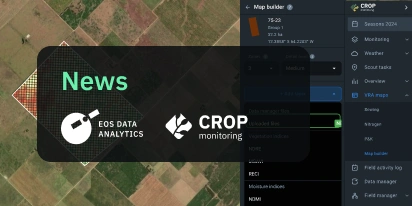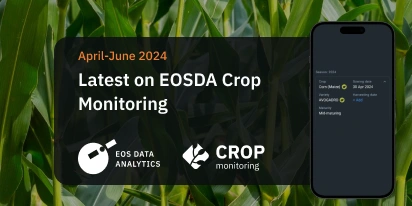How To Grow Rye And Get Increased Yields
Rye (Secale cereale) is a cereal grass of the Poaceae family, closely related to barley and wheat. Rye is grown mostly as a cover crop and a forage crop. Its grain is also used for the production of flour, bread, crispbread, beer, types of whiskey and vodka. Besides, it is widely used in food and medical industries. Rye is planted for its whole grains from which healthy cereals are made of. In the field of medicine, infusions and decoctions are made from rye grains. This cereal has a general strengthening, tonic effect on the human body, stabilizes the functions of the gastrointestinal tract, softens cough, relieves rheumatoid condition, and heals abscesses.
The main of all rye varieties are winter rye and spring rye. Winter rye is more widely grown due to its high tolerance of frosts. Besides, it develops on different types of soils, except for swampy ones, and the best crops are obtained on black soil. The growing season of rye is 120 – 150 days, and the crop is cultivated the same way as winter and spring wheat varieties.
Winter rye
Winter rye can withstand frosts down to -35 °С, which makes it the most widely planted rye variety. The technology of its cultivation is very similar to that of winter wheat. The productivity of the crop increases if planted in areas with sufficient moisture. Besides, winter rye is a great predecessor for a number of vegetables and cereals, which makes it a popular cover crop.
Spring rye
Spring rye has a limited distribution in the northern regions of its cultivation because its yields are lower than that of winter rye.
Rye has long been considered a weed in wheat fields and farmers got rid of it in every possible way. But now, due to its similarity to wheat, it is grown even in larger volumes than wheat itself. The reason is simple: wheat is much more demanding in terms of growth conditions, while rye grows much better in different areas. That is why rye plays an especially important role in the agriculture of countries with poor soil quality.
The top rye producing countries are Germany, Poland, Russia, Belarus, and Ukraine. On the territory of Russia, it is grown mainly within the forest zone.
Use EOSDA Crop Monitoring in Ukraine and Russia to manage your rye field.
Rye belongs to the group of cultures of the temperate regions. Seeds can germinate at temperatures above 0 °C. A sufficient temperature for seed germination is 1-2 °C, and for seedlings – 4 – 5 °C. A decrease in temperature in fall does not have a negative effect on the duration of the rye growing season. It mainly depends on the temperature during the spring growing season. The root system as a whole develops better if the soil temperature is lower than the air temperature. Rye is also a light-loving plant. When it gets enough light it develops rapidly, grows well, forms ears on all the stems of the bush, and gives high yields.
Winter rye is less demanding in terms of soil condition than other crops. It grows well even on sod-podzolic soils. Its root system has an increased assimilating ability, especially of sparingly soluble phosphorus compounds. Growing rye is possible on sandy loam soils, as well as on soils with high acidity (pH 5.3). The best soils for this crop are chernozems. The tillering of winter rye often ends in autumn, but sometimes it continues in spring. The root system develops very quickly. By the end of tillering, the roots penetrate to a depth of 1 m. Unlike other grain crops, winter rye lays a tillering node close to the soil surface (1.7-2 cm), regardless of the depth of sowing seeds.
Here are the main stages of the rye life cycle.
0. Germination
This stage marks the coleoptile emergence from caryopsis, penetrating the soil surface.
1. Leaf development
At this stage of development, the first leaf of the plant unfolds. The stage lasts until 9 or more leaves appear.
2. Tillering
This stage starts when the first tiller is detectable and ends when the maximum number of tillers (more than 3) are detectable.
3. Stem elongation
This is the stage when pseudostem and tillers erect and the first internode begins to elongate. The stage lasts until the flag leaf is fully unrolled, and the ligule is just visible.
4. Inflorescence emergence
This stage begins when the tip of the inflorescence emerges from the sheath and the first spikelet is visible. The stage lasts until the inflorescence emerges fully.
5. Flowering
Flowering stage begins when the first anthers are visible. The stage ends when all spikelets have completed flowering, although some dehydrated anthers may remain.
6. Development of fruit
Fruit development stage consists of the following fruit maturity stages:
- Watery ripe
- Early milk
- Medium milk
- Late milk
7. Ripening
This stage starts when the grain content is soft but dry and ends when the grain is hard and fully ripe.
8. Senescence
At this stage the grain becomes very hard. The stage ends with the plant dying and collapsing.
Land preparation for sowing winter rye varies greatly depending on the predecessors. After fallow, depending on the soil compaction, weediness of the field, and local weather conditions, layer-by-layer cultivation can positively affect the harvest of winter rye. If the predecessor was one of the perennial grasses, then an effective step in land preparation would be disking and plowing. In the chernozem zone, the plowing depth is 16 – 18 cm, in the steppe and forest-steppe zones – 18 – 20 cm. After growing early potatoes, fiber flax, peas, the rye field is cultivated with flat cutters to a depth of 10 – 12 cm. Heavily weedy fields are plowed to a depth of 23 cm.
EOSDA Crop Monitoring can help access the field to determine when to start preparing it for planting.
The most favorable period for rye planting is from the 3rd decade of August to mid-September. By this time, the other crops must be already harvested. If the seeds are sown later than the specified time, the plants will not have time to grow to the required size before the frost begins, which may result in seedlings dying.
If for some reason it was not possible to sow winter rye in fall, you can sow spring rye varieties in spring. Sowing in spring can be done immediately after the snow melts. Spring rye varieties are quite cold-resistant, so they are not afraid of spring frosts. It is necessary to sow this crop tightly so that the seedlings are dense.
Use EOSDA Crop Monitoring to assess when your field is ready for rye planting.
Before planting winter rye, it is necessary to select seeds of the appropriate quality. Required seed purity of 97%, germination of 92%, and growth force of not less than 80%. The weight of 1000 seeds must be not less than 35 grams. To prevent diseases, seed treatment is carried out. Before sowing freshly harvested seeds, they must be warmed up in the sun for 3 to 5 days, depending on the humidity, or kept for 2 – 3 hours in a grain dryer at a temperature of 45 °C. The seeds are sown in the usual row method.
Rye planting requires thorough soil preparation and compliance with a seed rate, depending on the soil.
Here are the most common rye seed rates (in million units):
- Chernozem region: 5 – 6 per 1 ha
- Non-chernozem region: 6 – 7 per 1 ha
If winter rye is sown after the fallow, the seed rate should be increased by 15 – 20%. If cross sowing or narrow-row sowing is used, the seeding rate should be increased by 10 – 15%.
Seeds on light soils are planted to a depth of 5 – 6 cm, on heavy soils – up to 3 cm, and in dry weather, the sowing depth is increased by 1-2 cm.
Identify your field productivity zones in EOSDA Crop Monitoring to distribute seeds across the field rationally.
Although rye is less demanding than wheat in terms of fertilization, application of fertilizers leads to increase in its yields. Due to the fact that winter rye is mainly grown on light, sod-podzolic soils, it reacts very positively to organic and mineral fertilizers.
Since winter rye is also less resistant to lodging than wheat, the norms of mineral fertilizers for it are lower. Besides, it absorbs nutrients from the soil better than wheat.
Depending on the fertility of the soil, mineral fertilizers requirements for rye are the following: N45-90, P45-90, K 45-90 kg / ha. Phosphorus-potassium fertilizers, as well as for wheat, are applied during tillage. During sowing, it is advisable to add 50 kg / ha of granular superphosphate. Nitrogen fertilizers are usually used to feed rye plants (30 – 60 kg / ha). On soddy-podzolic and podzolic soils, fertilize winter rye with 30-40 kg / ha of nitrogen when sowing. On acidic soils, liming must be carried out via the application of 3 – 5 t / ha of limestone fertilizers.
If the crop is grown on sandy, humus-rich soils (humus content over 4%), copper-containing fertilizers must be applied in fall. Copper deficiency leads to the formation of a weak tissue, increasing the likelihood of powdery mildew infection and lodging.
Identify your field productivity zones in EOSDA Crop Monitoring to distribute fertilizers across the field rationally.
Rye is not demanding in terms of water. Thanks to a highly developed root system it makes good use of the reserves of winter moisture in the soil. The crop does not need heavy winter precipitation. Dry fall weather is favorable, especially during sowing, as rye is sensitive to sowing in wet soil. Sufficient rainfall at low temperatures during the stemming period is necessary for uniform and complete stemming, which is good for high yields.
During flowering, no rye watering is needed. After flowering, it is not so demanding on the level of moisture, but on light soils, even a slight drought leads to insufficient grain filling.
Here are the most common rye pests and the ways to protect the crop from them:
Aphids
These pests cause the leaves to turn yellow or white and curl up. Plants may also turn purple in cold weather and get covered in sooty mold.
Protection measures:
- Spraying plants with a strong jet of water to knock aphids from leaves
- Insecticides treatment
Armyworms
These pests affect entire leaves of the plant, eating out notches in them. Young larvae of these pests are pale green to yellow in color while the older ones are dark green.
Protection measures:
- Biological control by natural enemies that parasitize the larvae
- The application of Bacillus thuringiensis pesticide
Wireworms
These rye pests cause the death of plant seedlings. The yellow-brown and chiny larvae can be found in soil.
Protection measures:
- Chemical control carried out at preplanting or as a seed treatment
- Frequent tillage
- Crop rotation
- No planting of susceptible crops after a wireworm infestation
Here are the most common rye diseases and the ways to protect the crop from them:
Blight
Blight in rye is manifested in water soaked spots on foliage, dead leaves, and yellow or brown glossy streaks. The plant also significantly slows down in growth.
Protection measures:
- Selection of certified, disease-free seed
- Fungicide seed treatment
- Crop rotation
Barley yellow dwarf
The plants affected by this disease slow down in growth, while yellow-green blotches appear at the leaves tips. The leaves eventually turn bright yellow, purple or red.
Protection measures:
- Control of aphid population
- No planting at the aphid peak activity periods
Loose smut
This rye disease causes early emergence of heads and the appearance of dark green or even black masses in place of kernels.
Protection measures:
- Selection of certified smut-free seed
- Seed treatment with hot water prior to planting
- Seed treatment with fungicide
- Selection of resistant varieties
Net blotch
This disease causes the appearance of dark green water soaked spots and narrow brown blotches on plant leaves.
Protection measures:
- Crop rotation with resistant crops
- Selection of resistant varieties
- Removal of residue from soil surface
- Destruction of volunteer rye plants
Powdery mildew
This rye disease is visible when white-gray growth appears on the upper surface of plant leaves. Eventually, the plant is covered in fungal fruiting bodies that become visible as black dots on the mildew.
Protection measures:
- Selection of resistant varieties
- Foliar fungicides treatment
- Removal of crop debris from field
- Removal of volunteer wheat plants
Rust
Chlorotic flecks or brown necrotic spots on leaves or stems; yellow streaks or patches on foliage; brown necrotic streaks on foliage; raised orange pustules may be present on lesions
Protection measures:
- Selection of resistant varieties
- Destruction of alternate hosts
- Fungicides treatment
- Planting early-maturing varieties
EOSDA Crop Monitoring can help assess the condition of plants based on vegetation indices to take the necessary actions when needed.
Swathing has now become the main method of harvesting winter rye. The maximum biological yield of winter rye grain is reached by the end of wax ripeness, which makes it the best period for harvesting. However, wax ripeness lasts only 4–6 days, and full ripeness means significant grain losses when harvesting. That is why rye harvesting should be carried out no later than the middle of its wax ripeness, when the grain is firmly held in the ear and does not crumble. Swathing method of harvesting in the waxy ripeness phase also makes it possible to obtain seeds with high sowing qualities.
When carrying out the swathing method of rye harvesting, not only timely mowing of grain into swaths is of great importance, but also the correct choice of timing of their collection and threshing. In both dry and wet areas, a large gap between swathing and collection is not preferable. Usually, the grain in swaths dries up and ripens from 2-3 days to 5-7 days, depending on the weather.
Keep in mind that late harvesting in humid and warm weather contributes to the development of fusarium, significantly depletes the grain, and decreases the dry matter content.
The yields of rye undergo significant fluctuations over the years. Depending on weather conditions, right management, and, most importantly, technical equipment used for harvesting, rye yields differ greatly.
An average rye yield per acre in 2020 is around 35 to 50 bushels. Yields of 70 to 80 bushels per acre can be obtained via good crop management.
Over the past 20 years, the lands allocated for growing rye have decreased in the world, which resulted in the growing demand on the global rye market.
Even Russia, being one of the biggest rye producers, has also started cutting its rye production, no longer exporting as large amounts of this crop as before. This trend has led to a shortage of rye grain in the global market and to the rise of its price accordingly.
An average price of rye per bushel varies from $4 to $6 in the last 5 years.
Increasing rye yields is possible through optimizing the following technological production methods.
Choosing a predecessor
In the crop rotation, the best predecessors of winter rye are clover and annual grasses. Planting rye after fallow is recommended only on heavily weeded areas and for the application of organic fertilizers, as well as when predicting extreme dry conditions of the growing season.
Seeding rate
The best seeding rate for winter rye to create the optimal density is 5-6 million / ha, depending on soil fertility, sowing time, and the use of growth stimulants. If necessary, for the development of seeds of promising varieties, it can be reduced up to 4 million / ha without significant damage to yield.
The use of fertilizers
The use of chemical and biological fungicides helps combat diseases of winter rye. They have a significant stimulating effect in relation to the root system of plants, increase in the productive tillering of plants, ensuring a significant increase in the yields of winter rye.
Use EOSDA Crop Monitoring to manage your field and increase yields.





